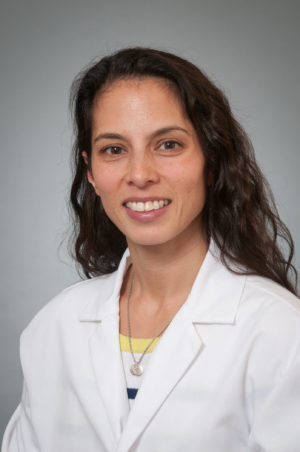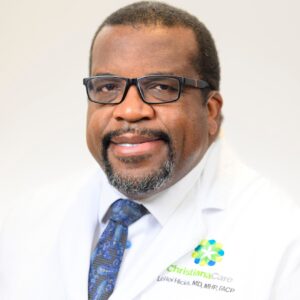Approximately 16 million people in America have been diagnosed with chronic obstructive pulmonary disorder (COPD). According to the National Heart, Lung and Blood Institute, there are many more people who have the disease but don’t know it.
COPD is a lung disorder that is usually a result of smoking or environmental factors. It is a major cause of disability and a leading cause of death in the U.S.
While there is no cure for COPD, the clinical team at ChristianaCare is taking a 360-degree approach to can help limit how it progresses through care standardization, patient education and pulmonary rehabilitation.
How standardization of care can help

In treating COPD, an Integrated Practice Team—the multispecialty team of clinicians who are tasked with helping to standardize care—addresses a patient’s other needs, including physical limitations, psychosocial concerns and behavioral issues, allowing pulmonary and critical care physicians to focus on the medical aspects of the patient’s disease.
“When COPD patients enter the hospital, we make sure we are treating them in a holistic way,” said Irene Swift, M.D., Pulmonology.
“That means making sure we are addressing all the concerns that go along with COPD — oxygen, bone health, medications — both in the hospital and once they are discharged—and making sure they can afford the medications and understand how to use them before leaving the hospital.”
Setting patients up for success

Preventing readmission to the hospital is a major goal of care standardization, said Brenda Rabeno, MHA, MBA, administrative director for the Acute Medicine Service Line and operational lead for the COPD Integrated Practice Team.
“Ideally, we set up patients with COPD care for success upon discharge, following up with them so they schedule and keep follow-up appointments, ensuring they have access to transportation and any equipment they may need, said Rabeno.
“COPD standardization of care also means better education for both the patients and the providers,” Dr. Swift said.
“We need to make sure primary care physicians understand the goals of COPD care, along with providers in behavioral health and musculoskeletal care. It is really a multi-faceted program.”
Patient information is shared electronically among the COPD team and primary care, musculoskeletal and other specialties supported by “one patient, one chart.”
This effort helps physicians understand what has occurred in the patient’s condition, provides prompts for all the questions they need to ask to ensure patients are getting optimal COPD care, and allows them to communicate with patients in a consistent way.
Providing seamless care
“It’s really important to transition care and set patients up for success,” said Rabeno.
“Care standardization allows us to give patients those tools on a consistent basis so they’re actually able to follow through with their plan.”
The team recently hired a COPD nurse navigator who, along with the COPD case manager, is instrumental in helping patients make and keep their appointments, and teaching patients about their disease using the new Healthwise education site.
“A big piece of this effort is ensuring patients have the appropriate resources,” Rabeno said. “Our nurse navigator and case manager are critical in helping the team align to address patients’ issues.”
Reaching out into the community
ChristianaCare is also working to expand its focus and take care of patients in the community who are living with COPD but may not be getting treatment.
“As we move from a health system to a system that impacts health, we want everyone in our community to have access to that same care, no matter their insurance or socioeconomic status,” Rabeno said.
While standardization of care for COPD outpatients is in its early stages, it is showing promise.
“Standardizing care across specialties can really benefit patients with COPD because it’s a systemic disease—so many different organs and bodily systems are involved,” Dr. Swift said.
“Our new approach allows us to focus on the top priority—helping patients achieve optimal health.”



